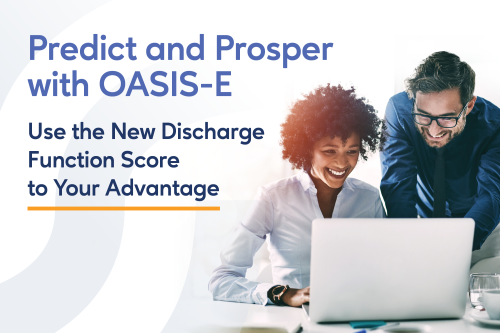The Centers for Medicare and Medicaid Services (CMS) is sharpening its focus on patient functional abilities as a reimbursement factor in value-based care, and the experts at SimiTree say that’s a signal to home health providers to re-think their approach to OASIS-E.
“The OASIS has always been crucial to patient outcomes and reimbursement, but we're seeing its role in care planning and care coordination expand greatly under value-based care,” said J’non Griffin, Sr. Vice President of Coding and Compliance at SimiTree.
“The OASIS-E can serve as a guidepost for care teams, enabling them to be very intentional about the tasks performed by everyone from aides to therapists and nurses, and coordinate care efforts to consistently deliver higher quality care,” Griffin said.
Strategic use of the OASIS-E can identify opportunities for effective care planning, she said, delivering not just better patient outcomes but a stronger public image for agencies under new publicly reported measures.
Unveiling the New Discharge Function Score for Home Health: What You Need to Know
Starting in December 2024, home health providers must publicly report patient discharge function, along with Home Health Value-Based Performance (HHVBP) data and payment adjustments. Public reporting of the discharge function was finalized in the Home Health Final Rule for CY 2024 issued last November.
Just a month after public reporting of the patient discharge function begins, an expanded VBP model will replace two Total Normalized Composite Measures (Self Care and Mobility) with a new Risk-Adjusted Discharge Function Score.
The new Risk-Adjusted Discharge Function Score effective in January 2025 will rely on a new and complex set of factors to assess the functional abilities of patients who are discharged from home health care.
GG Items and Their Impact on the Discharge Function Score
“It’s important to note that this new score will not be based solely on patient improvement from SOC to discharge, “Griffin said. “Instead, CMS will use a new methodology and project the discharge score that could be expected for a particular patient based on several factors.”
The Total Discharge Score will be based on the proportion of agency episodes where the observed discharged score meets or exceeds the expected discharge score, she said.
Factors used to calculate the new Risk-Adjusted Discharge Function Score will include patient clinical characteristics, such as certain comorbidities, and take into account the patient’s age and admission function score.
A specific set of items on the OASIS-E known as the GG items will also be important in assessing the patient’s functional ability. These items assess various activities of daily living such as eating, oral hygiene, and toileting hygiene.
“The takeaway for most providers is that it’s more important than ever for the patient’s functional abilities to improve during the episode of care – but there are a few other aspects that are equally important, and they also need to be considered,” Griffin said.
For example, she said clinicians may need to focus on maintaining the patient’s functional abilities determined during the admission function score.
“Maintenance always should have been a key consideration for care planning – but now that we are going to begin using the admission function score in the risk adjustment process for determining that Discharge Function Score, its importance has been underscored,” Griffin said.
“Maintenance should be a key consideration,” she said.
SimiTree: Your Guide to Navigating the New Discharge Function Score
SimiTree’s OASIS-E review services help providers stay on track for star ratings, reimbursement, and patient outcomes.
In addition, we offer OASIS-E training to help clinicians improve OASIS-E scoring accuracy, improve clinical documentation, and identify opportunities to better use the assessment tool for stronger VBP performance. We work with providers to implement processes that foster better overall care planning and care coordination based on OASIS-E information.
Use the form below to reach out to us today, and let’s discuss how your agency can get more mileage from the OASIS-E under value-based care.
Additional Resources
Top 3 Struggles with OASIS-E: How to overcome increased workload, new data sets, and more
Visit our Coding and OASIS Outsourcing page
Learn more about Value-Based Purchasing
Watch free on-demand webinars on OASIS and OASIS-E

